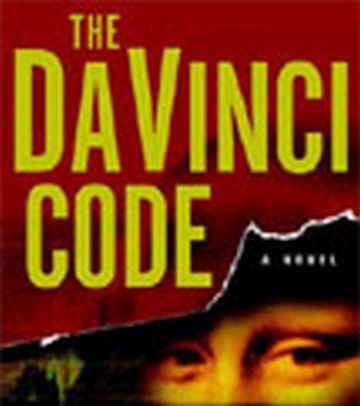Contribute
| Book Review - The Da Vinci Code |
Rajiv Ramaratnam
08/11/2004
Was the ‘greatest story ever told’, the ‘greatest story’ ever sold? How accurate are the modern day versions of the Bible in chronicling the life and times of Jesus Christ? The Da Vinci Code by Dan Brown raises these questions offering a groundbreaking revelation that could threaten the integrity of modern day Christian Beliefs. Well, that’s the sale pitch.
The cover story of the December 22nd 2003 issue of Time magazine featured the rise in popularity of early literary texts that never made it into the Bible. It cites reasons for this sudden shift due to new age and modern day believers feeling a strong discomfort with theological restrictions. It christens ‘The Da Vinci Code’ as a ‘carnival baker’ of a thriller that accuses the Roman Catholic Church of suppressing a vital aspect of the life of Christ. Since this book there have been numerous follow up books that attempt to discredit the author and accuse him of cooking up a preposterous theory based on half-truths.
The Da Vinci Code opens with the murder of the curator of the Louvre Museum in Paris. The events that follow place Harvard Symbologist Robert Langdon and Cryptologist Sophie Neveu, the grand daughter of the curator in a dangerous game of cat and mouse with the French authorities, Opus Dei, a powerful wealthy organization with connections all the way to the Vatican and some other sinister forces. (Opus Dei, a non-fictional organization has a response to this book on its website, www.opusdei.org.)
Through a series of cryptic clues, the duo finds its way to the ‘truth’, which Brown reveals about halfway through the book. I will refrain from revealing this ‘truth. Brown alleges that the present day Bible was a collection of selected texts during the reign of Constantine, the first Christian Roman emperor. In the process of compiling these texts, many significant aspects of the life of Christ, his legacy, and his life were omitted. He also states that the Roman Catholic Church suppressed these facts and presented to the world, a distorted view of Christian faith and the life of Christ.
The most important secret that was held back by the church was known to a selected few belonging to a secret society. This society boasted of personalities like Da Vinci, Newton and Victor Hugo. The book theorizes that Da Vinci presents clues to this truth in paintings like the Last Supper. Once this truth is revealed, the plot simply falls apart in the second part of the book, and finally comes to a very predictable end.
There are however, parts of the book I liked. They had little to do with the plot. For instance, Brown speaks with knowledge about the Louvre and other locales in Paris and London.
As an objective reader, I found some of Brown’s theories a bit farfetched. One that comes to mind is that this book ‘almost’ alludes that Walt Disney incorporated hidden messages in movies like ‘The Little Mermaid’ to clue us in on this ‘Secret revelation’ (Did Disney also belong to the Secret Society?) Though I have not read any rebuttal books yet, it seems obvious to me that Brown has blended a lot of new age mumbo-jumbo like the Yin-Yang theory with his own hand woven interpretations of Da Vinci artworks in coming up with his astounding theories.
The recent shakeup in the Catholic church, the popularity of Mel Gibson’s movie, The Da Vinci Code and its the follow up books are indications that several paradigm shifts are underway. This bold book does mark an important milestone of our time for one reason alone. It tells us more than anything else, that we are at a point where old faiths by themselves are not sufficient for many of us. We are curious beings and need to seek out other probable theories for the way things ‘are’.
Go ahead and read this one just to satisfy your curiosity. Find out what the fuss is all about. However, accept the ‘facts’ with more than a few grains of salt. This book does entertain at least some of the time.
You may also access this article through our web-site http://www.lokvani.com/
